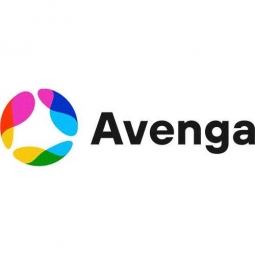
Technology Category
- Cybersecurity & Privacy - Identity & Authentication Management
- Platform as a Service (PaaS) - Application Development Platforms
Applicable Industries
- Transportation
- Utilities
Applicable Functions
- Procurement
- Product Research & Development
Use Cases
- Edge Computing & Edge Intelligence
- Voice Biometrics
The Customer
A Global Technology Company
About The Customer
The client is a technology leader with a 130-year-old history of working with manufacturing, utilities, infrastructure, and transportation. They are driving the transformation of industries towards a more sustainable future and focus on delivering new services and solutions that match their customers’ needs. They were using outdated solutions that lacked scalability and proper performance, leading to poor business productivity and user experiences. Their legacy IT landscape was composed of classic network drives and a Lotus Note-based email, and they had a complex multi-farm scenario, including SharePoint Online and on-premise.
The Challenge
SharePoint, a global technology company, was faced with the challenge of modernizing their client's outdated solutions to enable new products, services, and revenue streams. The client, a technology leader with a 130-year-old history in manufacturing, utilities, infrastructure, and transportation, was driving the transformation of industries towards a more sustainable future. However, their existing solutions lacked scalability and proper performance, leading to poor business productivity and user experiences. The client's legacy IT landscape was composed of classic network drives and a Lotus Note-based email, and they had a complex multi-farm scenario, including SharePoint Online and on-premise. They needed an experienced and committed technology partner to support them with the migration and modernization of their dated solutions.
The Solution
Avenga’s team helped the client maximize their digital transformation efforts by moving them from their legacy solutions to SharePoint capabilities. They developed tailored migration scripts to move content from legacy systems to SharePoint with proper tooling. They designed and implemented custom policies based on content governance best practices to maintain optimal performance, searchability, and security. They implemented federated and hybrid scenarios that allowed the client to mix on-premise legacy SharePoint farms and SharePoint online as a Content Services platform. They also implemented custom authentication providers that allowed the integration of the SharePoint environments with ADFS, supporting the NTLM authentication scenarios. Lastly, they provided a custom provisioning service, which is a customized workflow for the self-service creation of new sites and groups.
Operational Impact
Quantitative Benefit

Case Study missing?
Start adding your own!
Register with your work email and create a new case study profile for your business.
Related Case Studies.

Case Study
IoT Solutions for Smart City | Internet of Things Case Study
There were several challenges faced: It is challenging to build an appliance that can withstand a wide range of voltage fluctuations from as low at 90v to as high as 320v. Since the device would be installed in remote locations, its resilience was of paramount importance. The device would have to deal with poor network coverage and have the ability to store and re-transmit data if networks were not available, which is often the case in rural India. The device could store up to 30 days of data.

Case Study
Automation of the Oguz-Gabala-Baku water pipeline, Azerbaijan
The Oguz-Gabala-Baku water pipeline project dates back to plans from the 1970’s. Baku’s growth was historically driven by the booming oil industry and required the import of drinking water from outside of the city. Before the construction of the pipeline, some 60 percent of the city’s households received water for only a few hours daily. After completion of the project, 75 percent of the two million Baku residents are now served around the clock with potable water, based on World Health Organization (WHO) standards. The 262-kilometer pipeline requires no pumping station, but uses the altitude differences between the Caucasian mountains and the capital to supply 432,000 m³/d to the Ceyranbatan water reservoir. To the people of Baku, the pipeline is “the most important project not only in 2010, but of the last 20 years.”

Case Study
GPRS Mobile Network for Smart Metering
Around the world, the electricity supply industry is turning to ‘smart’ meters to lower costs, reduce emissions and improve the management of customer supplies. Smart meters collect detailed consumption information and using this feedback consumers can better understand their energy usage which in turn enables them to modify their consumption to save money and help to cut carbon emissions. A smart meter can be defined in many ways, but generally includes an element of two-way communication between the household meter and the utility provider to efficiently collect detailed energy usage data. Some implementations include consumer feedback beyond the energy bill to include online web data, SMS text messages or an information display in consumers’ premises. Providing a cost-effective, reliable communications mechanism is one of the most challenging aspects of a smart meter implementation. In New Zealand, the utilities have embraced smart metering and designed cost effective ways for it to be implemented. The New Zealand government has encouraged such a move to smart metering by ensuring the energy legislation is consistent with the delivery of benefits to the consumer while allowing innovation in this area. On the ground, AMS is a leader in the deployment of smart metering and associated services. Several of New Zealand’s energy retailers were looking for smart metering services for their residential and small business customers which will eventually account for over 500,000 meters when the multi-year national deployment program is concluded. To respond to these requirements, AMS needed to put together a solution that included data communications between each meter and the central data collection point and the solution proposed by Vodafone satisfied that requirement.

Case Study
Airport SCADA Systems Improve Service Levels
Modern airports are one of the busiest environments on Earth and rely on process automation equipment to ensure service operators achieve their KPIs. Increasingly airport SCADA systems are being used to control all aspects of the operation and associated facilities. This is because unplanned system downtime can cost dearly, both in terms of reduced revenues and the associated loss of customer satisfaction due to inevitable travel inconvenience and disruption.

Case Study
NB-IoT connected smart meters to improve gas metering in Shenzhen
Shenzhen Gas has a large fleet of existing gas meters, which are installed in a variety of hard to reach locations, such as indoors and underground, meaning that existing communications networks have struggled to maintain connectivity with all meters. The meter success rate is low, data transmissions are so far unstable and power consumption is too high. Against this background, Shenzhen Gas, China Telecom, Huawei, and Goldcard have jointly trialed NB-IoT gas meters to try and solve some of the challenges that the industry faces with today’s smart gas meters.

Case Study
IoT-based Fleet Intelligence Innovation
Speed to market is precious for DRVR, a rapidly growing start-up company. With a business model dependent on reliable mobile data, managers were spending their lives trying to negotiate data roaming deals with mobile network operators in different countries. And, even then, service quality was a constant concern.



